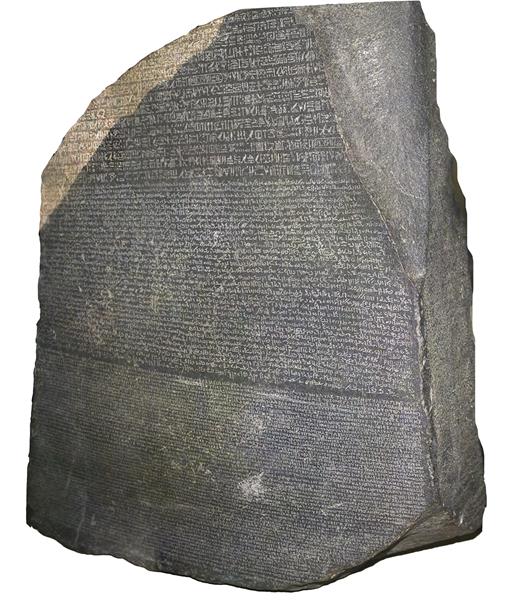Epistles: Text Treasures: The Rosetta Stone: Key to Egyptian Hieroglyphs

The Rosetta Stone refers to a fragmented Egyptian stela discovered near the Mediterranean port city of Rasheed (also known as Rosetta), in the western Nile Delta. Inscribed in three different languages, the famed artifact contributed significantly to the decipherment of ancient Egyptian hieroglyphs and the language of the pharaohs (see “Century Mark: The Decipherment of Egyptian Hieroglyphs”). Originally set up in a temple dedicated to King Ptolemy V (r. 204–180 B.C.E.), the stela is now on display in the British Museum in London.
The chance discovery of the stela took place in July 1799, during the French occupation of Egypt. Napoleon’s army was clearing debris around the 15th-century fort known locally as Borg Rasheed, to prepare defensive positions against arriving British forces, when they found a massive block of stone with one side that was polished and completely covered with about a hundred lines of engraved writing.
The exciting find was shipped to the Institut d’Égypte in Cairo, a scientific institution established by Napoleon to carry out research, study, and publication of Egypt’s natural and cultural riches. After their defeat, the French forfeited the stela to the victorious British. The prized find was then loaded on a ship for England in February 1802. It spent a year in the Society of Antiquaries of London, from where it was transferred to the British Museum, where it remains to the present day.
Already a library member? Log in here.
Institution user? Log in with your IP address.

